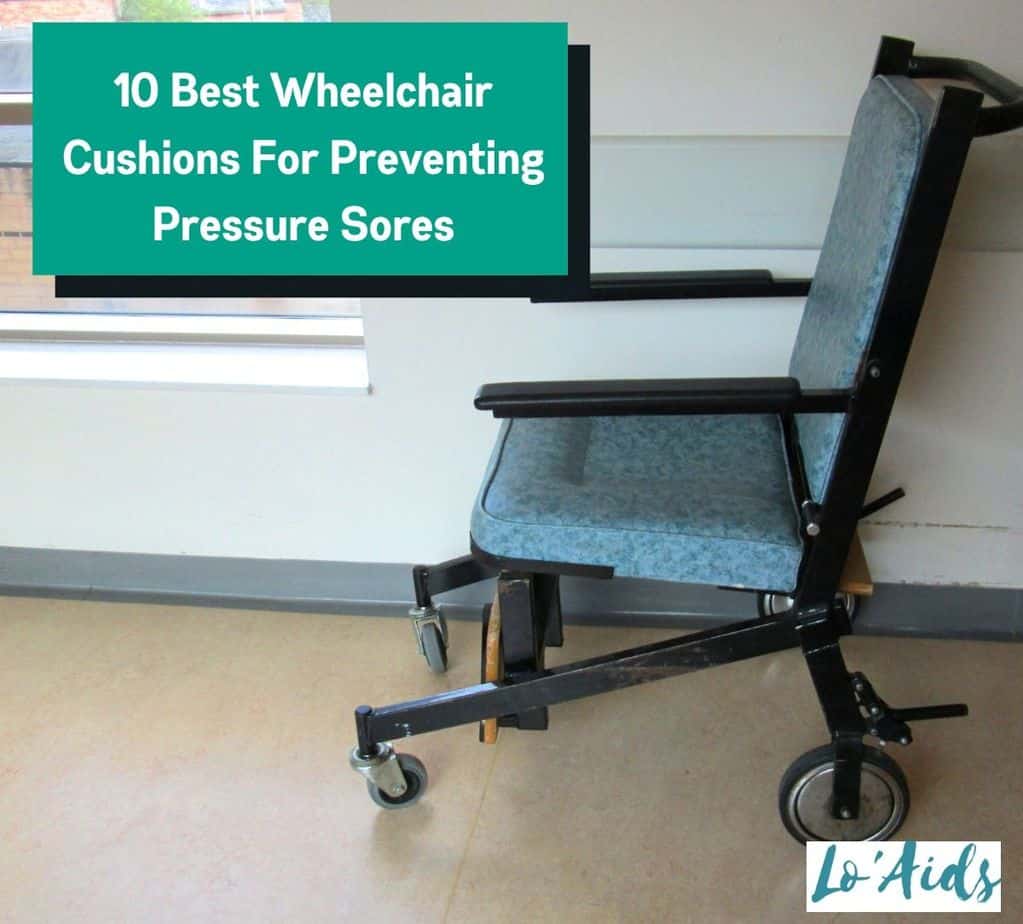Are you asking yourself, “How do wheelchair users go to the toilet on a plane”? You’re not alone!
As an experienced accessibility consultant, I’ve devoted my career to finding practical solutions for the 2.7 million wheelchair users in the US facing this challenge during air travel.
Through extensive research, testing, and expert consultations, I’ve unlocked the secrets to making flying a hassle-free experience.
In this article, I’ll reveal tips and strategies to help wheelchair users confidently navigate airplane bathrooms…
Table of Contents
Key Takeaways
- On-board wheelchairs are essential for accessing airplane bathrooms.
- Research airline accessibility options and prepare accordingly.
- Communication with flight attendants is crucial for a smooth experience.
- Be proactive and advocate for disability rights in air travel.
How Do Wheelchair Users Go to the Toilet on a Plane? (5 Tips)
Through my years of experience in helping wheelchair users, I’ve seen how my clients struggled to find bathroom access during their flights.
Here are 5 suggestions I advise to get a better experience on airplanes:
#1 Use The On-Board Wheelchairs
First and foremost, onboard wheelchairs, also known as aisle chairs, are essential for accessing airplane bathrooms.
These specialized chairs enable wheelchair users to navigate the narrow airplane aisles and reach the lavatories.
Be sure to request an aisle chair when booking your flight or contacting the airline’s customer service.
#2 Research Airline’s Accessibility Options & Features
Next, research the airline’s accessibility options and features before your flight.
Different airlines offer varying levels of accessibility in their lavatories, such as grab bars, call buttons, and lowered sinks.
Familiarize yourself with the specific features available on your flight and prepare accordingly.
#3 Communicate With Your Flight Attendants
Communicating with your flight attendant is crucial for a smooth experience.
Inform them of your needs, such as assistance in using the bathroom or accessing your seat.
Flight attendants are trained to help passengers with disabilities and will happily accommodate your requests…
#4 Check In Online: Save Time and Avoid Queues
Most airlines allow you to check in online before your flight.
It saves me a lot of time and hassle, as you can avoid long check-in queues at the airport.
Go to your airline’s website or app, enter your booking details, and check-in. You can also choose your seats and print or download your boarding pass.
#5 Get Personal Experiences and Diverse Perspectives From Other Wheelchair Users
Connecting with other wheelchair users and learning from their experiences can provide valuable insights and tips for navigating air travel.
Online forums and social media groups can be excellent resources for exchanging advice and sharing personal stories.
Now that you know how to devise some solutions, I’ll discuss the struggles of using airplane bathrooms…
The Struggles for Wheelchair Users in Airplane Bathrooms
For traveler and blogger Cory Lee, airlines must address this concern: “We’re such a huge portion of the travel population, and I wish airlines could see that and do something about it. [1]”
Wheelchair users report the following struggles:
Air Travel and The Impact of People with Mobility Impairments
Air travel can be a daunting experience for people with mobility impairments, particularly when navigating airplane bathrooms…
Even worse is the lack of standardized – and mostly frustrating- regulations across airlines that exacerbate the problem.
Not only does it harm people further, but it creates problems in the accommodations available to passengers with disabilities.
Confined Spaces and the Impact of Limited Accessibility Features
Often, confined spaces and a lack of accessibility features can pose significant challenges for wheelchair users, making it a stressful experience.
In many cases, users may be unable to enter the bathroom, while others may struggle to maneuver within the tight space, increasing the risk of injury and discomfort.
But how do you make it more accessible?
Turn to the next section, where I will explore various strategies and solutions to address these challenges that accessibility features airlines offer and provide practical tips for a smooth journey.
PRO TIP: For more great tips, consult this YouTube video:
Air Travel for Wheelchair Users – Making the Skies More Accessible
Throughout my years, I’ve gained extensive experience and knowledge in navigating the unique challenges wheelchair users face when flying.
Here are some perks available in airports and airplanes for you to use:
Airplanes With Lavatory Accessibility
Thankfully, the Air Carrier Access Act mandates that U.S. airlines provide wheelchair-accessible lavatories on their flights [2].
It says, “The ACAA prohibits discrimination against persons with disabilities in commercial air transportation.” [2].
Some facilities include grab bars, call buttons, and other accessibility features to make the experience more manageable and comfortable for wheelchair users.
So use them when needed!
Airlines with accessible bathrooms and their specific features
Several airlines offer accessible lavatories on their flights, including Delta, United, and American Airlines.
Plus, these accessible bathrooms may have features like handrails, lowered sinks, and call buttons to help ensure a comfortable and safe experience for wheelchair users.
Airlines that provide aisle chairs during the flight
Some airlines offer onboard wheelchairs, or aisle chairs, to help wheelchair users navigate the plane during the flight.
These specialized chairs can assist with using the bathroom, reaching your seat, and moving around the cabin.
For some other great tips when traveling, check out this video:
How Do I Use the Airplane Bathroom If I Cannot Walk?
Traveling with disabilities can be a daunting experience, especially if you need assistance with basic tasks such as using the bathroom.
Learning how to transfer from wheelchair to toilet is a vital skill that can make this process smoother and more comfortable.
As John Morris, a wheelchair user, said in a recent interview, “Those strangers we pass by on the street – most of them are good people who, when given the option, will do good. [3]”
“And so,” he continues, “I have learned to never be afraid to ask a stranger for help.”
What he says resonates deeply: it highlights why you should never be afraid to ask for help, even from strangers, when needed – so take John’s advice…
For passengers who have trouble walking, flight attendants can provide an aisle chair—a narrow wheelchair designed to fit down the airplane aisle.
The flight attendant will assist you in transferring from your seat to the aisle chair and then accompany you to the lavatory.
Once inside, you can use the grab bars and other assistance features to use the bathroom independently.
Which Airplanes Have an Aisle Chair for Use During the Flight?
Throughout my years of flying, I’ve found that most modern airplanes have aisle chairs for passengers requiring bathroom assistance.
But it is always best to check with the airline before booking your flight to ensure they can accommodate your needs.
Indeed, some airlines may require advance notice to have the necessary equipment and personnel available.
If you’re unsure, I advise asking anyone – the crew, fellow passengers, or even the security. You’d be surprised to see how quickly someone will come to your aid.
Now, turn to my ultimate guide to the knows and hows of coping without a lavatory in sight…
What If There Is No Accessible Lavatory? (3 Tips To Proper Planning)
If your flight does not have an accessible lavatory, consider these 3 alternatives:
- Use the bathroom before boarding: Take advantage of airport facilities to avoid needing the restroom during the flight.
- Limit fluid intake: By minimizing the number of fluids consumed, you can reduce the likelihood of needing a bathroom break during your trip.
- Speak with the airline: Communicate your needs to the airline and see if they can make accommodations, such as providing an aisle chair and assistance from a flight attendant.
Remember, don’t hesitate to ask for help, even from strangers. Embrace the kindness of others and enjoy your journey!
Make sure to also check out the informative articles on “How Can I Make My Bathroom Wheelchair Friendly?” and “How Much Do You Tip for Wheelchair Assistance at the Airport” for some helpful tips and insights on accessibility and travel. Stay safe and comfortable on your journeys!
Frequently Asked Questions
1. Are airplane bathrooms wheelchair accessible?
Some airplane bathrooms are wheelchair accessible, especially on wide-body aircraft with dual aisles. It’s essential to research your airline’s accessibility options.
2. Can I use an airplane bathroom if I can’t stand or self-transfer?
Yes, many airlines offer onboard wheelchairs or aisle chairs designed to help you access the bathroom and assistance from flight attendants.
3. Are there limitations to the size or type of wheelchair allowed on a plane?
Airlines may have limitations on the size or type of wheelchair allowed in the cabin. Check with your airline regarding their specific policies and restrictions.
4. How big are wheelchair accessible airplane lavatories?
Wheelchair-accessible airplane lavatories vary in size based on aircraft type and model.
Generally larger than standard lavatories, they provide ample maneuvering space, typically measuring about 56 inches long and 32 inches wide.
5. Can a flight attendant help me get to the airplane bathroom?
Certainly! Feel free to request any help from flight attendants. They are paid to assist and taught to be polite and helpful.
Conclusion
Now that your question, “How do wheelchair users go to the toilet on a plane?” has been answered, let’s recap what you’ve learned:
More than a decade of experience helping wheelchair users taught me one thing:
Access to bathrooms can be slippery – all the more for wheelchair users and people with disabilities.
For wheelchair users, going to the toilet on a plane may seem daunting, but it is achievable with proper planning and assistance.
Don’t be afraid to ask for help when needed, as you’ll find that most people are willing to lend a hand.
As for proactive steps, planning, notifying the airline of your needs, and advocating for disability rights are all essential in making travel more accessible for everyone.
Now it’s your turn: What are your thoughts or experiences on air travel accessibility for wheelchair users?
Share your stories in the comments below, and don’t forget to share this article with friends and family who might benefit from it…

Resources
1. Passengers with Disabilities [Internet]. US Department of Transportation. 2012. Available from: https://www.transportation.gov/airconsumer/passengers-disabilities
2. Garry J. It’s Time for Airlines To Change How They Treat Wheelchair Users [Internet]. Matador Network. 2021 [cited 2023 Apr 11]. Available from: https://matadornetwork.com/read/time-airlines-change-treat-wheelchair-users/
3. Taufiq R. John Morris: Interview about Accessible Travel [Internet]. Travelinsightpedia. 2020 [cited 2023 Apr 11]. Available from: https://www.travelinsightpedia.com/people-stories-john-morris-accessible-travel





